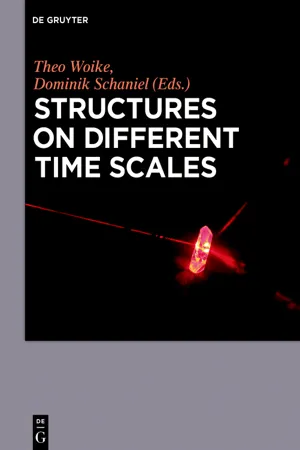
- 282 pages
- English
- ePUB (mobile friendly)
- Available on iOS & Android
Structures on Different Time Scales
About This Book
Volume 1 of this work presents theory and methods to study the structure of condensed matter on different time scales. The authors cover the structure analysis by X-ray diffraction methods from crystalline to amorphous materials, from static-relaxed averaged structures to short-lived electronically excited structures, including detailed descriptions of the time-resolved experimental methods. Complementary, an overview of the theoretical description of condensed matter by static and time-dependent density functional theory is given, starting from the fundamental quantities that can be obtained by these methods through to the recent challenges in the description of time dependent phenomena such as optical excitations.
Contents
Static structural analysis of condensed matter: from single-crystal to amorphous
DFT calculations of solids in the ground state
TDDFT, excitations, and spectroscopy
Time-resolved structural analysis: probing condensed matter in motion
Ultrafast science
Frequently asked questions
Information
Static structural analysis of condensed matter: from single-crystal to amorphous
Introduction
1Basic diffraction algorithm
Table of contents
- Cover
- Title Page
- Copyright
- Dedication
- Contents
- List of Contributors
- Introduction
- Static structural analysis of condensed matter: from single-crystal to amorphous
- DFT calculations of solids in the ground state
- TDDFT, excitations, and spectroscopy
- Time-resolved structural analysis: probing condensed matter in motion
- Ultrafast science
- Index